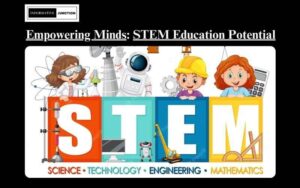In the dynamic realm of education, the advent of technology has ushered in transformative tools, and at the forefront stands the Learning Management System (LMS). This comprehensive guide aims to delve into the depths of LMS, unraveling its potential to reshape the way we approach teaching and learning.
Understanding LMS: Navigating the Educational Horizon
Before we explore the myriad benefits and features of LMS, it’s essential to comprehend its core functionality. The Learning Management System serves as a robust software application designed to centralize, manage, and optimize the delivery of educational content. Whether in traditional classrooms or the digital realm, LMS is a beacon of innovation.
Read More Informative Blogs on Informative Junction
Key Features of LMS
1. Intuitive User Interface: Gateway to Seamless Navigation
At the heart of every successful LMS is an intuitive interface that simplifies navigation for educators and learners alike. This user-friendly design ensures a seamless experience, allowing stakeholders to focus on the substance of educational content.
2. Content Management and Delivery: Streamlined and Efficient
LMS platforms excel in providing a streamlined process for uploading, organizing, and distributing educational content. Be it textual information, multimedia resources, quizzes, or interactive modules, LMS ensures the efficient delivery of content tailored to diverse learning preferences.
3. Progress Tracking and Analytical Insights: Shaping Informed Education
A standout feature of LMS is its systematic tracking of learner progress. Educators gain access to analytical insights, understanding engagement levels, completion rates, and quiz scores. This data-driven approach empowers educators to refine teaching methods for optimal effectiveness.
4. Collaborative Tools: Fostering Dynamic Interaction
Education thrives on collaboration, and LMS platforms acknowledge this by incorporating tools for group discussions, collaborative projects, and peer-to-peer interaction. The result is a dynamic and engaging learning environment that transcends traditional boundaries.
Benefits of Integrating LMS in Education
1. Flexibility and Accessibility: Learning Unleashed
LMS introduces unparalleled flexibility, enabling learners to access educational materials at any time and from anywhere. This adaptability accommodates diverse schedules and learning preferences, empowering individuals to chart their learning journey at their own pace.
2. Elevated Engagement through Interactive Elements: Redefining Learning Experiences
Interactive features, multimedia content, and gamification elements embedded within LMS contribute to elevated learner engagement. This redefinition of the learning experience goes beyond traditional methods, fostering enjoyment and efficacy.
3. Cost-Effectiveness and Resource Optimization: A Pragmatic Approach
Traditional education often involves substantial costs related to materials, printing, and distribution. LMS eliminates these expenses, providing a cost-effective solution for educational institutions and learners alike. This pragmatic approach optimizes resources and enhances the overall educational experience.
4. Real-Time Updates for Relevance: Adapting to Change
In a world characterized by rapid change, staying current is paramount. LMS facilitates real-time updates to course content, ensuring that learners consistently access the latest information and resources. This adaptability is crucial for relevance in today’s dynamic educational landscape.
Choosing the Right LMS: A Strategic Decision
Selecting the appropriate LMS involves a meticulous evaluation of factors such as scalability, integration capabilities, and technical support. Matching the platform to the specific needs and goals of the educational institution is paramount for a successful and sustainable integration.
Implementation Strategies: Integrating LMS for Maximum Impact
1. Comprehensive Training Programs
Before fully integrating an LMS, it’s imperative to conduct comprehensive training programs for educators and administrators. This ensures that all stakeholders are well-versed in the functionalities and potential of the system.
2. Customization for Institutional Needs
Each educational institution is unique, and an effective LMS should be customizable to meet specific needs. Whether it’s adapting to different teaching styles or aligning with curriculum requirements, customization enhances the overall efficacy of the system.
3. Collaborative Decision-Making
The decision to adopt an LMS should be a collaborative effort involving educators, administrators, and IT professionals. This collaborative approach ensures that the chosen LMS aligns seamlessly with the institution’s goals and educational philosophy.
4. Continuous Evaluation and Improvement
Implementing an LMS is not a one-time process; it requires continuous evaluation and improvement. Regular assessments, feedback loops, and updates are vital to ensuring that the LMS evolves in tandem with the institution’s changing needs.
Conclusion: Pioneering Educational Excellence with LMS Innovation
In conclusion, the integration of a robust Learning Management System is not merely a technological upgrade but a transformative leap toward reshaping the educational landscape. The multifaceted benefits, advanced features, and adaptability of LMS position it as a powerful ally for educators and learners alike. Embrace the future of education with an LMS, and unlock a world of possibilities for enriched, personalized, and effective learning experiences.
As we continue to explore the vast expanse of educational technology, LMS stands as a testament to the boundless potential for positive change in the realm of learning and teaching. The journey towards educational excellence begins with understanding, and with LMS as your guide, the possibilities are limitless.




